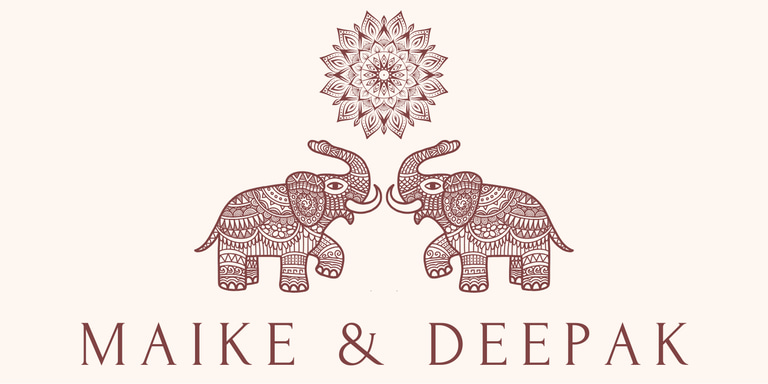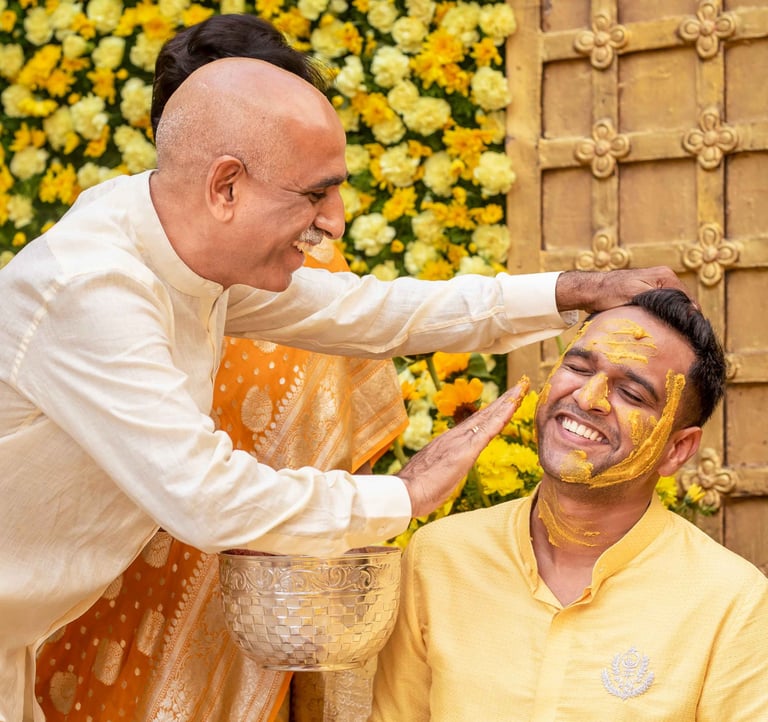

Purpose: To purify, protect, and bless the couple
Family members apply a turmeric-based paste (haldi) to the bride and groom’s face, hands, and feet. This ritual is filled with laughter, music, and bright yellow outfits. The haldi is said to cleanse the body and ward off evil. Instead of separate events, both families can celebrate this together, encouraging playful interaction.
Rituals


Purpose: To adorn the bride with henna and celebrate beauty and love
The bride gets intricate mehendi (henna) designs drawn on her hands and feet. This is a relaxing, social event with music, snacks, and lots of photos — a perfect opportunity for German guests to try something new and for both sides to mingle.
Indian Hindu weddings are vibrant, emotional, and deeply symbolic — filled with a series of rituals that celebrate love, family, and the sacred bond of marriage. These traditions vary widely across regions, communities, and families, each with its own customs and meanings. For our special day, we’ll be celebrating primarily in the North Indian Hindu style, while keeping the ceremonies inclusive and welcoming for both our Indian and German families.
Below, we’ve listed the key rituals you’ll see — along with short descriptions and links to learn more if you’d like to dive deeper.
Haldi or Mangal Snaan
Mehndi
Purpose: Arrival of maternal relatives
The Bhaat ceremony is a heartfelt tradition in which the maternal uncle (Mama) of the groom (or bride) plays a central role. It is his symbolic gesture of love, responsibility, and blessing towards his sister (the groom’s mother) and her son (the groom).
It reflects the close bond between a mother and her brother and is a moment of emotional connection between extended families. It also honors the maternal side of the family, who often live apart from the bride or groom.
Bhaat
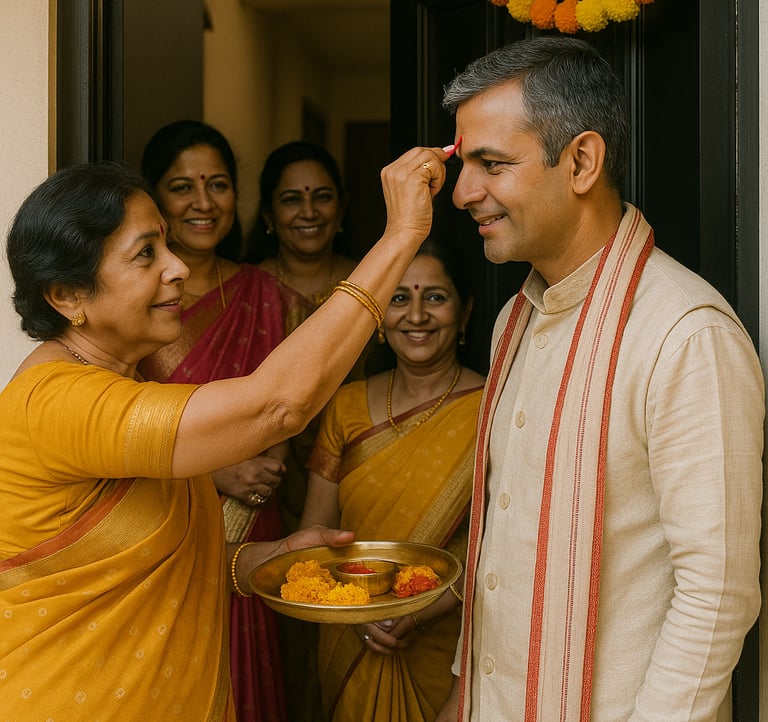

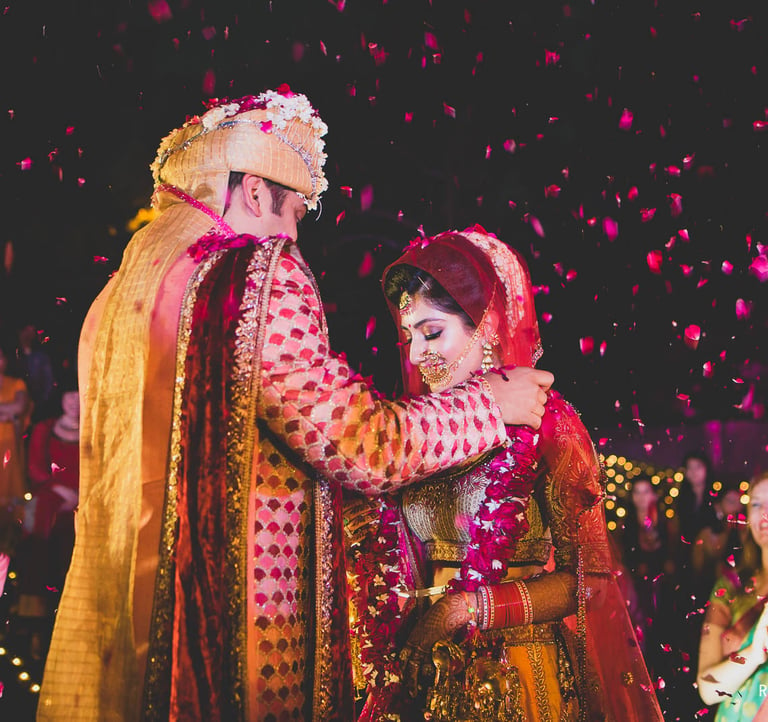

Jai mala
Purpose: Mutual acceptance and beginning of marital bond
The bride and groom exchange floral garlands, symbolizing mutual respect and consent to the marriage. It’s usually playful and accompanied by cheering, music, and light-hearted teasing from friends.
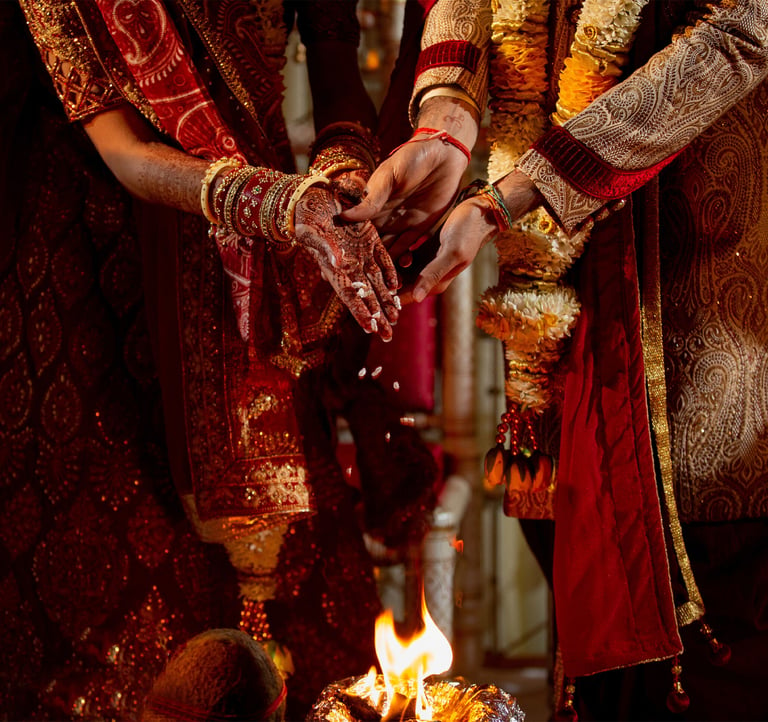

Vivah
Purpose: Sacred union in the presence of fire and family
The ceremony is conducted around a sacred fire (Agni), which acts as the divine witness. Main elements include:
Mangal Pheras: The couple walks around the fire seven times, making vows for their life together
Sindoor & Mangalsutra: The groom applies red powder (sindoor) to the bride’s hair parting and ties a sacred necklace (mangalsutra) around her neck, marking her as married
Ritual timeline ...
Here are all the rituals with timeline to give a better feeling about the whole process of wedding and preparation before. That include both traditional rituals and local cultural processes ....

